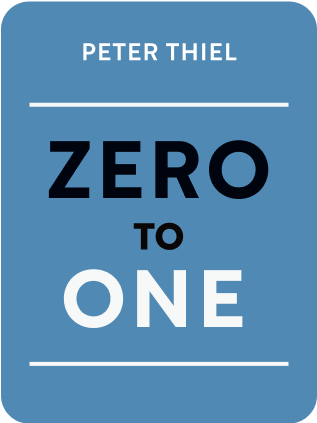

This article is an excerpt from the Shortform summary of "Zero To One" by Peter Thiel. Shortform has the world's best summaries of books you should be reading.
Like this article? Sign up for a free trial here .
If your product sells itself, do you really need to market it? How do you know which sales method is right for your business?
Peter Thiel argues that, as you develop a product, you must also develop a plan to get that product to customers. You could have the best product in the world, but your company will fail if you don’t have the right sales and distribution strategy. He discusses four sales methods and helps you know which one is the best fit for you.
Keep reading for Thiel’s advice on startup sales strategies.
Startup Sales Strategies
One of the lessons learned from the dot-com crash was to focus on building a product that’s so good it sells itself, rather than trying to drive sales of a mediocre product with marketing hype. Thiel is concerned that this conventional wisdom dangerously downplays the importance of marketing.
He contends that developing a plan for how you will distribute your product is an integral part of developing your product. In fact, sometimes a revolutionary startup sales strategy is enough to elevate an existing product line to monopoly status. On the other hand, a poor startup sales strategy can be the death of a company with a sound product. In fact, Thiel says more companies fail due to faulty sales strategies than faulty products.
Furthermore, Thiel expresses concern that most entrepreneurs (and people in general) misunderstand the nature of marketing: They think advertising and sales pitches don’t work, because when they hear sales pitches or see advertisements, they don’t rush out and buy the products, nor do they see other people doing so.
Thiel explains that the purpose of advertising is to carve out a place for your product in the viewer’s mind, not to make them go on a buying spree. If you can teach people to think of your product the way you want them to, then their own perception of your product will drive sales, which is your goal.
He goes on to say that teaching people to think a certain way about your product is a subtle art. If people feel like you’re trying to coerce them into buying something, they’ll be resistant to your message.
Methods of Selling Products
Thiel explains that there are a number of ways to go about selling your product. Which one is right for you depends largely on two metrics:
- Customer lifetime value or CLV is the profit you earn over the course of your relationship with a customer. For example, if you sell automobiles at a profit of about $5,000 per car, and your average customer buys a new car once every ten years for about forty years, then your CLV is $20,000. Or, if you sell vitamins that a customer would take every day at a profit of $0.05 per tablet, and the average customer takes your vitamins for forty years, then your CLV is $730.
- The customer-acquisition cost or CAC is the amount you spend to acquire a customer. For example, if you spend $1 million on marketing, and you get 5,000 new customers, your CAC is $200 per customer.
To make a profit, you need the CLV to be higher than the CAC. Different sales methods have different customer-acquisition costs. So your CLV determines your sales methods by constraining your CAC. Thiel discusses four specific sales methods:
1) Complex Sales
As Thiel explains, complex sales are the most expensive because they require the personal involvement of your CEO to coordinate with multiple stakeholders on high-value sales (over $1 million) that your customer may perceive as high-risk. In other words, they have the highest CAC, and that’s justified because of their exceptionally high CLV. However, Thiel cautions that if your CEO has to be personally involved in every sale, you shouldn’t expect your sales to grow by more than 50% to 100% per year. This is because growth comes from making bigger sales, not more sales, since the number of sales per year is limited by your CEO’s limited time. And new customers are usually hesitant to place an order that’s worth much more than the sales you’ve handled up to that point.
(Shortform note: a complex sale is a business-to-business sale that involves multiple stakeholders in a company, takes considerable time to negotiate and finalize, is potentially high risk for the buyer, and involves a lot of money. Read more about complex versus traditional selling in the Shortform summary of The Challenger Sale.)
2) Direct Sales
Thiel says direct sales are expensive because your sales reps have to meet each customer personally, but they are cheaper than complex sales because they can be arranged by sales reps instead of the CEO. For individual sales ranging from $10,000 to $100,000 in value, this personal attention is justifiable and may be necessary to build your customers’ confidence by showing them how your product can solve their particular problems.
3) Mass Marketing
Thiel notes that mass marketing (such as television ads) can be expensive, but it has a low CAC because it allows you to reach many potential customers at once. This makes it his method of choice for most consumer products. He says advertising can work well for startups when your CLV is too low to justify the CAC of direct or complex sales. However, he also warns that you can waste a lot of money on advertising if you let your corporate ego drive you to compete with larger companies for media attention.
4) Viral Marketing
Thiel explains that viral marketing is the least expensive type of marketing. It involves inviting just a few people to try out your product, typically via email or social media, and then relying on these first customers to spread the word. It is ideal for low-cost (or free) products that have a low CLV because it costs almost nothing and enables your customer base to grow exponentially.
He recounts how PayPal started with only 24 users, all of whom were PayPal employees. Then they implemented an incentive program, whereby users would get paid for getting their friends to sign up. Their user base grew exponentially, eventually making the company highly profitable.
Selling Yourself
As we mentioned earlier, marketing is more about shaping how people perceive your product than it is about coercing them to buy it. As Thiel explains, you can (and should) extend this principle to more than just the product that your company produces. You need to shape investors’ perceptions of yourself and your company to secure their backing. You need to shape your company’s image, not only in the minds of potential customers but also in the minds of potential employees and the media.

———End of Preview———
Like what you just read? Read the rest of the world's best summary of Peter Thiel's "Zero To One" at Shortform .
Here's what you'll find in our full Zero To One summary :
- Why some companies genuinely move the world forward when most don't
- How to build a company that becomes a monopoly (and why monopolies aren't bad)
- Silicon Valley secrets to selling products and building rockstar teams






